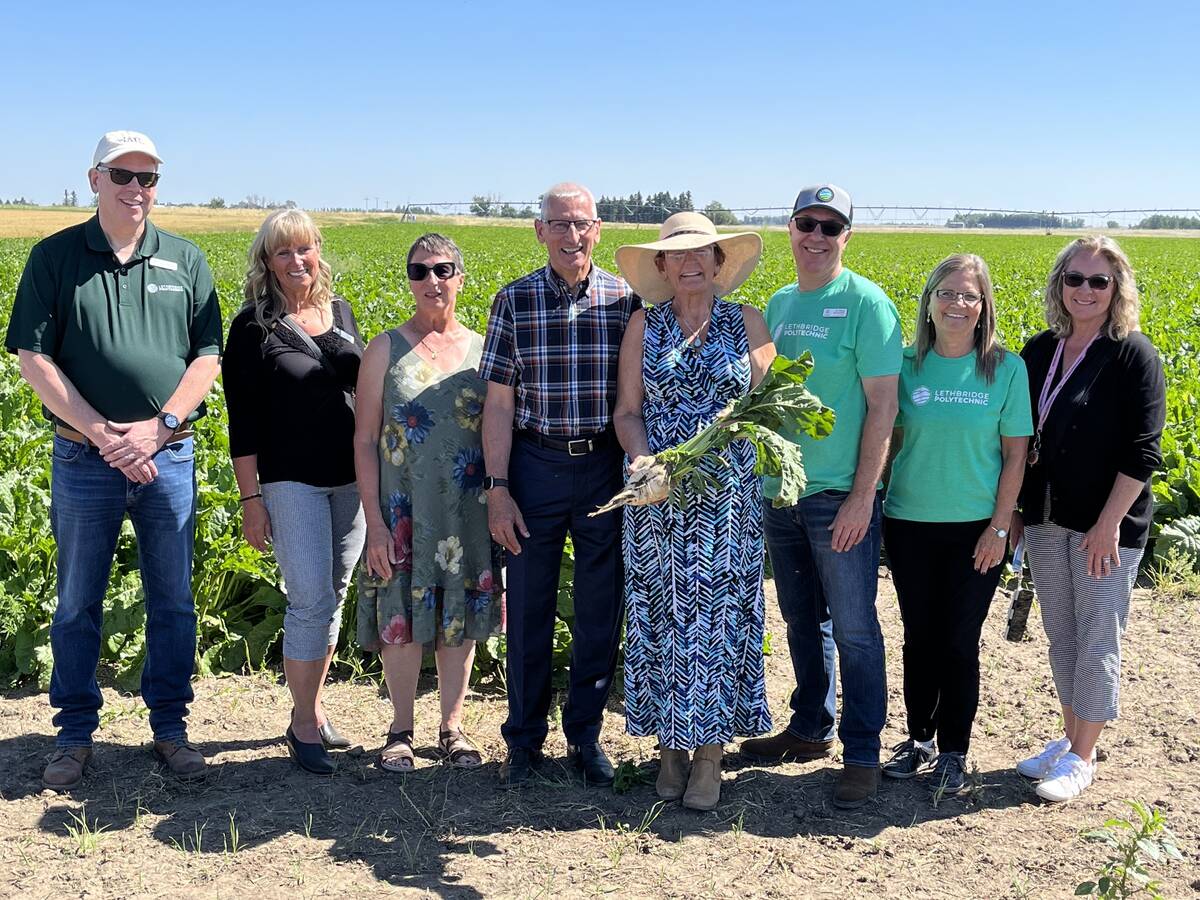Insufficient test samples could jeopardize Canada’s ability to shake the stigma of BSE that has hounded the cattle industry since 2003.
The country could be listed among those with negligible risk of BSE if no more cases of the brain-wasting cattle disease are found between now and 2016.
That could open additional trade opportunities.
However, getting that designation from the World Organization for Animal Health (OIE) depends on enough testing to prove absence of BSE, and cattle producers are not providing enough samples.
Canada-wide, 20,803 animals have been tested in the first nine months, but 30,000 are needed by year end.
Read Also

Lethbridge Polytechnic receives major donation
Multimillion-dollar donation by Hranac family aids Lethbridge Polytechnic’s research in integrated food production systems, irrigation science and post-harvest technology in Alberta
Of those, about 10,000 should come from Alberta, and only 6,000 animals from that province have been submitted for testing.
“We will likely come up short of 30,000” Alberta Beef Producers chair Greg Bowie said at a meeting in Fort Macleod, Alta., Oct. 27.
Animals eligible for testing must be older than 30 months and either diseased, distressed, down or dead.
Producers are paid $75 for each animal tested, but many say it is not worth the trouble of keeping a sick or dead animal, phoning a veterinarian to do the test and waiting for the results before disposal.
Producers used to receive $225 per animal, but provincial funding for the program dried up and no more has been budgeted.
Part of the sample shortfall relates to the number itself, said Bowie.
Canada is expected to test a specific number of animals, but the national cow herd has shrunk since the number was set. He said rules that required a percentage of the herd to be tested, rather than a number, would be easier to manage.
Producers at the Fort Macleod meeting passed a motion directing ABP to lobby for that change.
To encourage testing, ABP has also produced a video for cattle producers. Speaking in that video, Canadian Cattlemen’s Association president Dave Solverson said cattle producers might think BSE is behind them, but proof of a healthy national herd is still needed.
Former ABP chair Doug Sawyer said there is another aspect to low sample numbers: BSE manifests itself in older animals, which means they are the ones that need to be tested.
“I think here in my area, and throughout the province here, our cow herd has gotten younger,” he said.
Gordon Krebs, a veterinarian from Didsbury, Alta., said the OIE also has concerns about Canada’s feed ban.
He told ABP members in Crossfield, Alta., Oct. 29 that the international group has questions about meat and bone meal entering feed. A ban on those products in feed was implemented in 1997.
Canada has had 18 cases of BSE since 2003, and the last one was in a cow born in 2004.
“If we have a cow born in 2009 (that tests positive), we have big problems because it shows our feed ban isn’t working,” said Krebs.
Sawyer said BSE devastated individual farmers, and he doesn’t want a repeat.
“We scraped by with no money or losing money. Prices are better now, but we’re still recouping from those tough years financially.”
Cattle prices have reached record highs in recent months and Bob Lowe, an ABP member who sits on the CCA board, said good times should not be jeopardized.
“We do not want to go backwards on BSE testing,” he told Zone 2 members Oct. 27.
“The reason we’ve got these prices is because of trade.”
The BSE video is part of a larger campaign to bring attention to the issue.
Dr. Gerald Hauer, Alberta’s chief veterinarian, said veterinarians have been asked to actively promote BSE sample submission. Ads, brochures, and pamphlets will also be used.
















